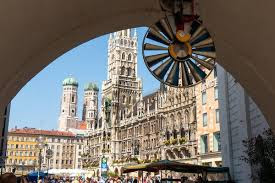MUNICH and Dessau have plenty of art to offer, as well as stories of the past.
IN the final years of World War II, about 90 percent on Munich's Altstadt, or Old Town, was reduced to rubble by Allied Bombers. In the recent years that followed, using an extensive archive of prewar photographs, the city rebuilt its Old Town stone by stone, to restore as much as possible its prewar grandeur.
About 280 miles of north, a much smaller city, Dessau, was similarly destroyed during a bombing raid in March 1945. Its reconstruction took a different form : the sterile apartment blocks that became emblematic of the German Democratic Republic, or East Germany.
Dessau's arguably most historically important building - an amalgamation of gray concrete and dark glass that housed the short-lived but hugely influential Bauhaus art school from 1926 to 1932 - wasn't restored until 1972.
I visited both cities - which are so different from each other that at times I had to remind myself I was in the same country - for the arts, which had put them on this year's 52 places list.
With a wave of innovative programming, Munich is making a name for itself in the global performing art scenes. Dessau is one of the three German cities celebrating the centenary of Bauhaus, the revolutionary artistic movement.
As is often the case when you travel anywhere expecting something specific, I found far more to think about than opera and architecture.
The honor and serving of great writings on Travel and Tourism, continues. The World Students Society thanks author Sebastian Modak

.png)


0 comments:
Post a Comment
Grace A Comment!